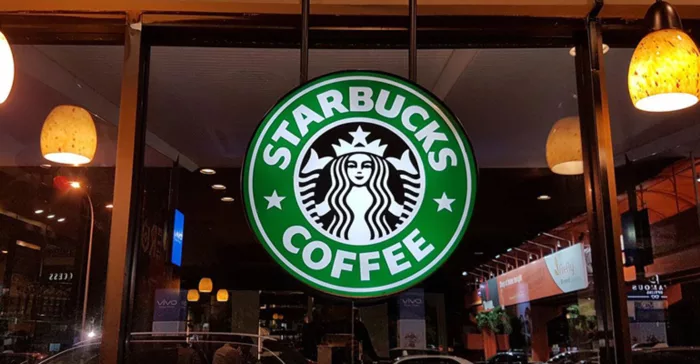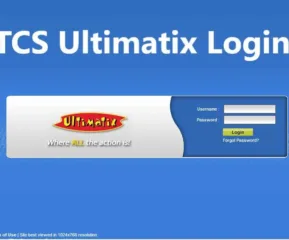Starbucks, founded in 1971 in Seattle, has become a global coffeehouse icon known for its high-quality coffee, inviting cafes, and thousands of locations in over 80 countries, serving millions daily. Knowing Starbucks’ schedules matters greatly to both customers and employees. It allows customers to plan their visits, integrate coffee stops into their daily routines, and enjoy convenience.
Table of Contents
Importance of Starbucks Schedule
For Starbucks employees, clear and predictable schedules are vital for work-life balance and income stability. It enables them to plan personal lives, manage commitments, and maintain balance. Additionally, it’s crucial for efficient workforce management and ensuring the right staff is available during peak hours for excellent customer service. Understanding Starbucks’ schedules is critical for store operations and satisfying both customers and employees.
Similar read: What Is TBH Meaning On Instagram
Starbucks Store Types

Starbucks offers a variety of store types to cater to different customer preferences and needs. Here’s a differentiation between three prominent types of Starbucks stores: cafe, drive-thru, and reserve stores, along with how schedules may vary based on these store types:
Starbucks Cafe Stores:
These are the standard Starbucks outlets where customers can walk in, order their favorite beverages and food, and enjoy them in the café’s seating area. They often feature a cozy and inviting atmosphere, making them ideal for socializing, studying, or working.
Café stores typically have schedules that revolve around the store’s opening hours, which often follow regular business hours. Shifts for employees may include mornings, afternoons, and evenings, with some flexibility to accommodate peak traffic times.
Starbucks Drive-Thru Stores:
Drive-thru stores are designed for customers on the go. Customers can order and pick up their drinks and food without leaving their cars, offering convenience and speed.
Drive-thru stores may have schedules that extend beyond typical café hours. They often require employees for early morning shifts to serve commuters on their way to work, as well as late-night shifts to accommodate evening customers. Drive-thru stores may also have a higher demand for staffing during peak traffic hours.
Starbucks Reserve Stores:
Reserve stores offer a premium Starbucks experience, featuring rare and small-batch coffee options, high-end brewing methods, and a more upscale ambiance. These stores aim to provide a unique and immersive coffee experience.
Schedules at Reserve stores may differ from regular café stores, as they may require specialized baristas with in-depth knowledge of coffee brewing methods. Staffing schedules may prioritize experienced baristas during peak hours, as the preparation of specialty beverages can be more time-consuming.
Efficient scheduling is of paramount importance for Starbucks employees, as it directly impacts both the workforce’s well-being and the smooth functioning of Starbucks stores.
Here’s an explanation of why efficient scheduling matters and how Starbucks manages employee schedules:
Similar read: ISTG Meaning In Text Messaging
Starbucks Employee Schedule

- Work-Life Balance: Efficient scheduling helps employees maintain a healthy work-life balance. It ensures that they have predictable hours, which makes it easier to plan personal commitments and spend quality time with family and friends.
- Income Stability: Predictable and well-managed schedules are crucial for employees to rely on a stable income. This is particularly significant for those who depend on their Starbucks job as their primary source of income.
- Employee Satisfaction: When employees have schedules that suit their needs and preferences, they tend to be more satisfied and motivated. This, in turn, can lead to better customer service and staff retention.
- Fair Distribution of Hours: Efficient scheduling ensures that work hours are distributed fairly among employees, preventing overworking or underutilizing any particular staff member.
How Starbucks Manages Employee Schedules?
Scheduling Software:
Starbucks utilizes advanced scheduling software and tools to create and manage employee schedules efficiently. These software solutions take into account various factors such as employee availability, labor laws, and historical sales data to optimize scheduling.
Partner Preferences:
Starbucks employees, known as “partners,” can often specify their preferred availability and desired work hours. Starbucks takes these preferences into account when creating schedules, whenever possible.
Peak Hour Staffing:
Starbucks pays close attention to peak hours, ensuring that there are enough employees on duty during busy periods to maintain prompt and quality service. This may include scheduling additional staff for morning rushes or special promotions.
Flexibility:
Starbucks acknowledges the importance of flexibility in scheduling, especially for part-time or student employees. They aim to accommodate varying availability while still meeting operational needs.
Communication:
Open communication between managers and employees is encouraged. If employees need adjustments to their schedules due to personal reasons or emergencies, they are often encouraged to discuss these matters with their supervisors.
Compliance:
Starbucks also ensures that employee schedules comply with local labor laws, including minimum wage requirements, maximum working hours, and break times.
Similar read: What Is The Meaning Of SMH
1. Barista Schedules

Starbucks baristas play a crucial role in ensuring the quality of coffee and customer service at Starbucks stores. Their responsibilities include:
- Customer Service: Baristas are the frontline employees who interact with customers. They take orders, offer menu recommendations, and provide a friendly and welcoming experience to guests.
- Coffee Preparation: Baristas are responsible for preparing and serving a variety of coffee beverages, including espresso, cappuccinos, lattes, and brewed coffee. They must ensure that each drink is made to Starbucks’ quality standards.
- Food Preparation: In addition to beverages, baristas may be responsible for preparing and serving food items such as pastries, sandwiches, and snacks.
- Cash Handling: Baristas handle cash transactions, process payments, and provide accurate change to customers.
- Maintaining Cleanliness: They are responsible for keeping the store clean and organized, including cleaning equipment, restocking supplies, and ensuring a tidy customer area.
- Product Knowledge: Baristas must have a thorough knowledge of Starbucks’ menu, including seasonal offerings, and be able to answer customer questions about ingredients and customization options.
- Adherence to Policies: They follow Starbucks’ policies and procedures, including food safety and hygiene standards, to ensure the safety and well-being of customers and fellow employees.
Common Shifts and Hours for Baristas:
Barista schedules at Starbucks can vary depending on the location, store type, and employee preferences. However, some common shifts and hours for baristas include:
- Morning Shifts: Morning shifts often start as early as 5:00 or 6:00 AM and can extend into the early afternoon. This is when many customers stop by for their morning coffee on their way to work.
- Afternoon Shifts: Afternoon shifts generally begin in the late morning or early afternoon and may last until early evening. During these hours, baristas continue to serve customers and prepare beverages and food items.
- Evening Shifts: Some Starbucks stores stay open into the evening to cater to customers looking for an evening coffee or snack. Baristas working evening shifts may start in the late afternoon and finish in the evening.
- Weekend Shifts: Baristas are often required to work on weekends, as Starbucks stores typically experience high traffic during weekends. Weekend shifts may follow a similar schedule to weekday shifts.
- Part-Time and Full-Time: Starbucks offers both part-time and full-time positions, allowing employees to choose the number of hours they work each week based on their availability and preferences.
2. Shift Supervisor Schedules
Responsibilities of Shift Supervisors
Shift supervisors at Starbucks play a crucial role in maintaining the smooth operation of the store during their shifts. Their responsibilities include:
a. Leadership and Supervision
- Supervising and leading a team of baristas during a shift.
- Ensuring that baristas follow Starbucks’ standards and procedures.
- Providing guidance and support to baristas when needed.
b. Customer Service
- Ensuring excellent customer service by addressing customer concerns or issues promptly.
- Managing the flow of customers and ensuring that orders are prepared accurately and efficiently.
c. Cash Handling
- Handling cash registers and ensuring cash transactions are accurate.
- Balancing cash registers at the beginning and end of shifts.
d. Inventory Management
- Monitoring and restocking inventory items, such as coffee beans, pastries, and supplies.
- Reporting inventory levels to store managers for restocking.
e. Opening and Closing Duties
- Opening the store by setting up equipment, preparing beverages, and arranging the display.
- Closing the store by cleaning and sanitizing equipment, restocking, and securing the premises.
How Shift Supervisor Schedules Differ from Baristas
Shift supervisor schedules at Starbucks differ from those of baristas in several ways:
- Shift supervisors often work longer shifts, typically ranging from 6 to 8 hours.
- Their schedules may include opening or closing shifts, which require arriving earlier or staying later than baristas.
- Shift supervisors have more responsibilities during their shifts, including overseeing the entire store and making decisions to ensure its smooth operation.
They may have a set schedule or a rotating schedule, depending on the store’s needs.
Similar read: What Is ‘Og’ Meaning
3. Store Manager Schedules
Role of Store Managers in Starbucks
Store managers are the leaders of Starbucks stores and are responsible for their overall performance. Their role involves:
a. Leadership and Management
Managing and leading the store’s entire team, including baristas and shift supervisors.
Setting goals and expectations for the store’s performance.
b. Operational Oversight
Ensuring that the store follows Starbucks’ operational standards and policies.
Handling any issues or challenges that may arise during daily operations.
c. Financial Management
Managing the store’s budget, including labor costs, inventory, and expenses.
Maximizing profitability by monitoring sales and cost control.
d. Customer Experience
Ensuring that the store provides an exceptional customer experience.
Addressing customer concerns and feedback.
Typical Schedule of a Store Manager
Store manager schedules at Starbucks can vary, but they typically follow a full-time schedule. Here is an example of a typical store manager’s schedule:
- Days: Store managers usually work five days a week, including weekends and some holidays.
- Hours: A store manager’s shift can range from 8 to 10 hours per day.
- Opening and Closing: They may have a combination of opening and closing shifts, depending on the store’s needs.
- Administrative Tasks: In addition to their on-floor duties, store managers also allocate time for administrative tasks, such as scheduling, inventory management, and reporting.
- What Does the Red Heart Mean on Snapchat? - April 23, 2024
- What Is a TF Card and How Does it Work? - April 20, 2024
- 10 Best Instagram Reels Downloader in 2024 - April 17, 2024





